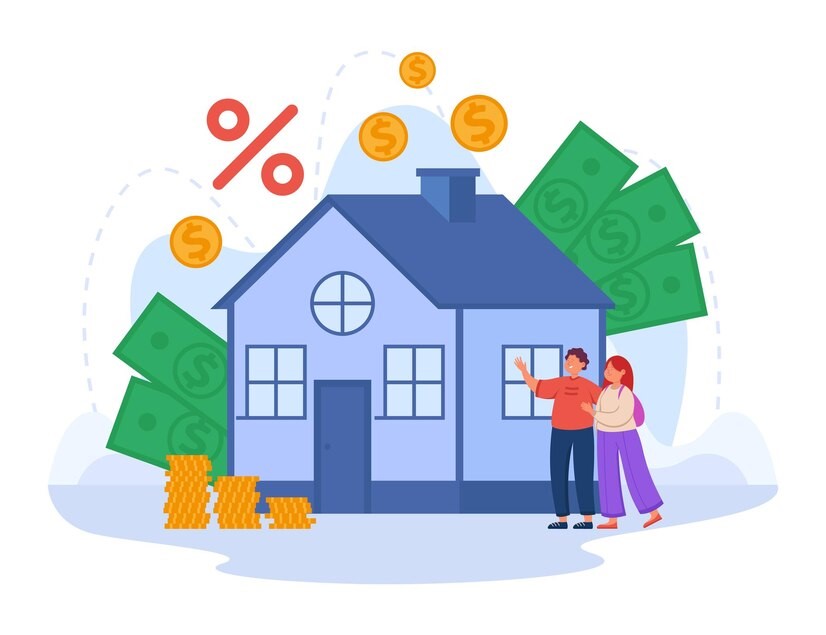Payments and Insurance for anything can be a critical task to manage as it requires many variables i.e. documents, activities etc.
If you have recently purchased a new home or are preparing to buy one soon you may already know that Private Mortgage Insurance PMI is among the most expensive costs associated with homeownership, however it can also in many instances be deductible from your governmental tax return.
If you have planned well and know how to deduct it, this deduction could save you hundreds of dollars every year. Tracking these deductions is essential to claim them on your taxes.
This article will discuss how you can write off PMI on your taxes.
What is PMI?
Mortgage lenders usually ask for Private Mortgage Insurance (PMI) when borrowers can’t cover at least 20% of the loan. However, PMI premiums, like monthly mortgage payments, were partially allowed for deductions by a tax allowance for policies written after 2006.
However, the deduction was phased out commencing the 2022 tax year and has not been reinstated by the US Congress.
The Policy said that for those who meet certain criteria and have not yet filed taxes for previous years, it is needed to amend their earlier taxes to obtain the PMI tax relief.
PMI deduction on taxes used to be around a few hundred dollars per year for an ordinary home buyer claiming the regular PMI premium amount.
Origin of Mortgage Insurance Tax Deduction
It first appeared in the Tax Relief and Health Care Act of 2006. It was originally offered for mortgages originating in 2007 or later.
The Act extending the deduction through 2016 was passed as an immediate response to the ongoing slow recovery in the housing market. Mortgage insurance deduction taken on line of tax returns Schedule A,
Enter the amount from this section in box five of the lender’s Form 1098. The deduction for mortgage insurance premiums is an itemized deduction that expired in 2021.
Who can Deduct PMI
To qualify for the deductibility of private mortgage insurance, tax payers must fulfill some conditions:
- Opt not to take the standard deduction but rather itemize your federal tax return.
- According to some timelines, you should have taken out a mortgage loan to buy your home on or after Jan. 1, 2007.
- The loan must be used for the purchase or renovation of your main or secondary residence.
- Those who earn higher incomes are not allowed to take the PMI deduction because of income phaseouts.
The phaseout starts with $100,000 for married taxpayers filing jointly.
PMI deductibility is eliminated entirely by $109,000 for most people where every $1,000 over the cap reduces PMI deductibility by 10%. Income caps are lower for other taxpayers who file under certain filing statuses.
Here’s how to Maximize your PMI Deduction
-
Understand Eligibility for the PMI Deduction
Taxpayers whose AGI exceeds a hundred thousand dollars in the case of unmarried individuals, or fifty thousand dollars in the case of married individuals who filed separately are eligible to claim the PMI deduction on a proportionate basis, meaning that the PMI deduction becomes gradually unavailable for them.
In contrast, if a taxpayer’s overall AGI exceeds the said thresholds, he has access to a classified item above the line. This classification is utilized when the taxpayer has already qualified and itemized those deductions.
Make sure when taking all tax advantages, the place of itemization should be higher than standard deduction.
Only loans on the first and second houses and loans for the improvements of the houses will be allowed. Refinance loans may also be eligible, but the funds borrowed for refinancing must have been used for house improvements.
-
Make the right calculations for your PMI payments
Study the mortgage statements and be sure to keep track of your PMI invoices and how much you paid during the tax year.
Ordinarily, this information is provided by the lender with Form 1098. Also consider potential refunds of PMI premiums.
If you have had the opportunity to place PMI at the time of closing, you are likely to have been able to amortize some of it across the lifetime of the loan (for example 84 months or the duration of the loan, whichever is less). You need to look into your closing documents for this information.
-
Optimize your AGI
You can get a lower AGI, and therefore a higher deduction by contributing to tax-deferred accounts (like 401k and traditional IRA).
Contributing to a Health Saving Account (HSA), if you qualify, can lower your AGI and allow for more deductions. Selling investments at a loss allows you to offset capital gains and pay less tax.
-
Schedule Your Payments
To maximize your deductions for the current tax year, consider paying your January PMI payment in December if your income is close to the threshold.
If you expect to lose eligibility for the deduction in the future (due to income growth or changes in the tax code), you need to prepay PMI amounts to claim the deduction now.
-
To claim PMI, itemize your deductions
You need to Compare standard vs. itemized deductions. The PMI deduction is only available if you list out. Compare your total list of deductions (PMI, mortgage interest, property taxes, and other eligible expenses) to the standard deduction. Tax preparation software can help you decide whether itemizing is beneficial to you.
-
Deduct PMI from both Primary and Secondary Homes
First you need to ensure that your primary home’s PMI is fully accounted for deductions. If you own a second home and pay PMI on the mortgage, you may deduct those premiums under the same rules.
-
Maintain thorough Documentation
Keep Form 1098 and any other documents from your lender detailing PMI payments.
If you prepaid PMI at closing, keep the disclosure statement as a reference. Keep copies of past returns on which you claimed PMI deductions, as the IRS may request proof during an audit.
-
Track Legislative Changes
Congress frequently renews the PMI deduction, which is considered temporary in nature.
Keep up with tax law changes to ensure you can still claim it. Before filing your taxes, check the IRS website or consult with a tax professional to get the most up-to-date information on the deduction.
-
Reassess Annually
Your eligibility for the PMI deduction can change depending on your income. Evaluate your AGI once a year.
PMI may no longer be required as your loan-to-value (LTV) ratio falls below 80%. Request PMI cancellation to save money.
Conclusion
Your financial burden as a homeowner can be reduced by deducting PMI. It’s important to meet the eligibility criteria and file the deduction properly.
Check the IRS guidelines or talk to a tax professional to maximize your savings.
Finally, it all comes down to being active and organized. Whether you file your taxes on your own or with the assistance of a professional, remember that every bit of preparation today can result in significant financial relief tomorrow.
So take advantage of the deductions available to you and reduce your burden as a homeowner. And if you’re looking to buy a home and want to secure funding for it you can connect with Munshi Capital!





